 |
| CRISTY ORTEGA, vekvet-voiced singer of Serafin Payawal, for Chelsea, 1955 |
The idea of Filipinas smoking was not exactly an alien
practice early on in our history, as women—and
even children smoked tobacco for leisure. In the 18th century, tobacco was
widely grow in in the islands and became an important and lucrative product for
the Spanish government.
It was so commonplace especially for older women to smoke
that the younger, more modern Filipinas were told to shy away from cigarettes. It
took Americans to make the practice more “sophisticated” with the coming of
imported cigarettes with fancy brand names that were so different from the old-fashioned,
local brands like “Alhambra Regaliz”, “Bataan”
and “Balintawak”.
“Chesterfield”, “Lucky Strike and ”Camel” sounded cooler
and more refreshing—but they were cigarettes that were associated with the
masculine market.
In the mid 1950s, CHELSEA
Cigarettes were launched in the Philippines by its manufacturer, Larus and
Brother Co., (Charles and Herbert Larus)
of Richmond, Virginia. Under its authority, CHELSEA were distributed by International Tobacco Co., Inc., with
offices at Del Pan St., Manila.
The products of Larus & Bro. Co. (1877-1968) were no stranger to the Philippine market. A first, they produced Smoking and Chewing
Tobaco, and its most popular bards was Edgeworth,
introduced in 1903.
The company began to manufacture cigarettes after it
purchased the Reed Tobacco Company and adopted it as a subsidiary in 1913.
Distribution companies were opened all over the U.S., and its territories. During
the World War II, the company’s tobacco supply went to the U.S. Army and its
support agencies. In fact, packets of 4 cigarettes were labeled with the words “I
Shall Return” and secretly distributed in the Philippines.
CHELSEA Cigarettes
was one of the company’s cigarette brand that was introduced post-war. It was one of the first products that used the
concept of positioning employed in advertising strategies, in which an image for the product based on a specific
and intended audience is created and promoted.
From approximately 1955 to 1957, CHELSEA rolled out a campaign that featured women personalities—from nightclub singers to
models and rising socialites—to extoll the pleasures of smoking the new lady’s
brand—“new and fresh as the day it leaves the factory…delightfully mild as I
want my cigarette to be!”.
A few of these ads directly targetted to women smokers
are on this spread. However, the makers must have also realized that CHELSEA Cigarettes were also suited for
men, as smoking, after all, was still a male-dominated practice. A token ad was
produced, showing an illustration of a man lighting up a smoke—touting “the
fine taste of quality in the special blend of imported U.S. Virginia tobaccos…mild and mellow…flavored
to your taste”.
CHELSEA Cigarettes
disappeared in the market when Larus and Brother Co. was sold to Rothman's of
Canada, Ltd. In 1968. The cigarettes were later reintroduced by Liggett and
Myers, who had acquired Larus & Brother's trade marks in 1976.
SOURCES:
Larus & Brother Co.: https://en.wikipedia.org/wiki/Larus_and_Brother_Company
Chelsea Brand: http://www.cigarettespedia.com/index.php/BrandChelsea

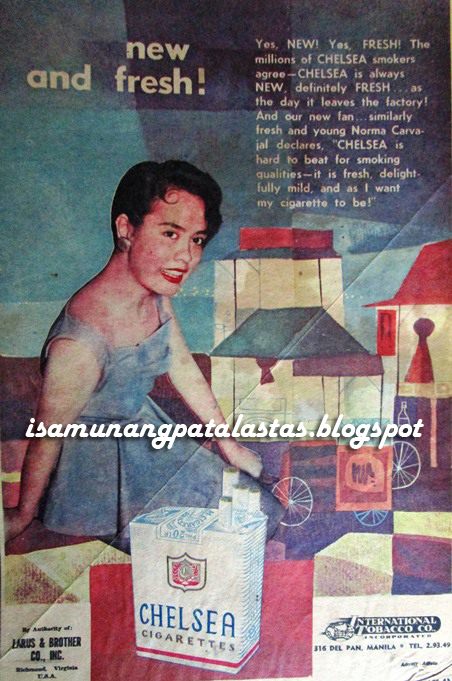
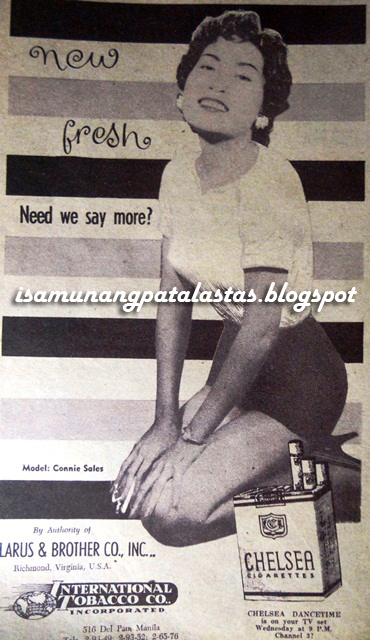
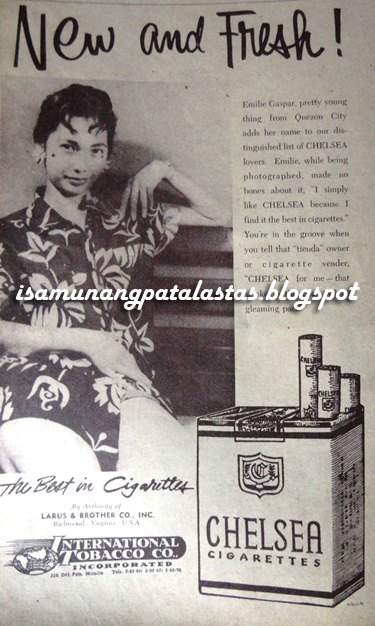
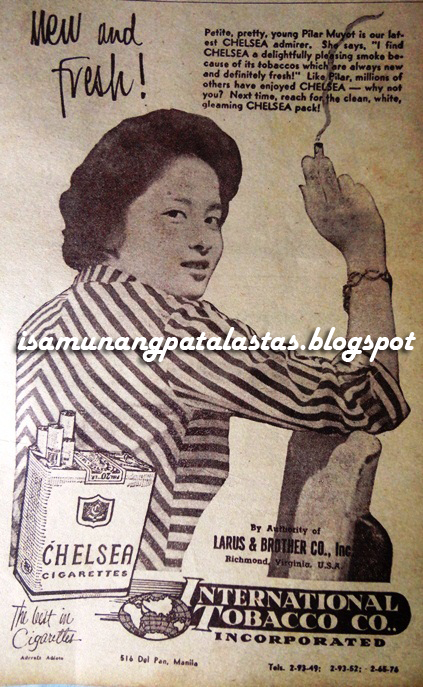
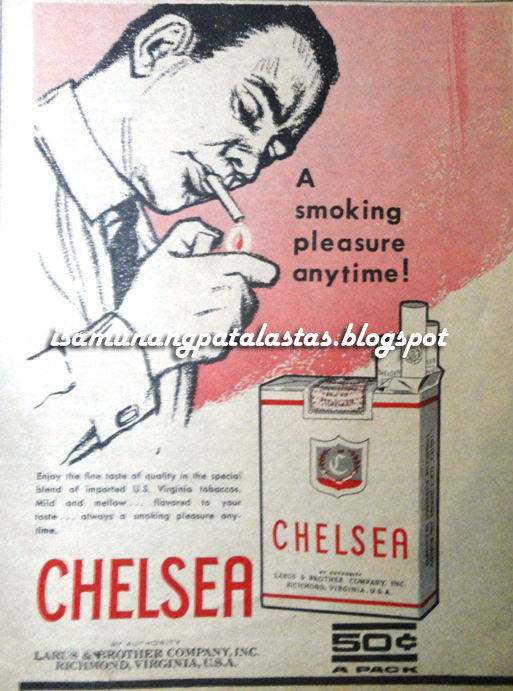
No comments:
Post a Comment